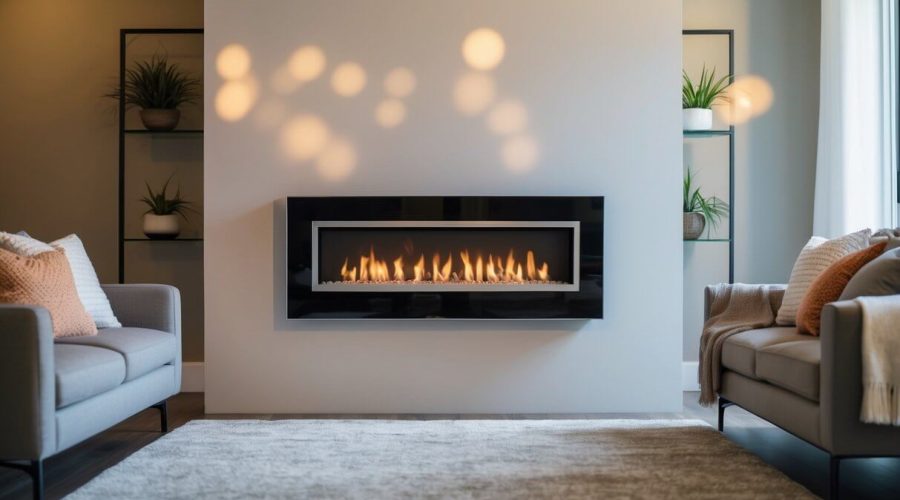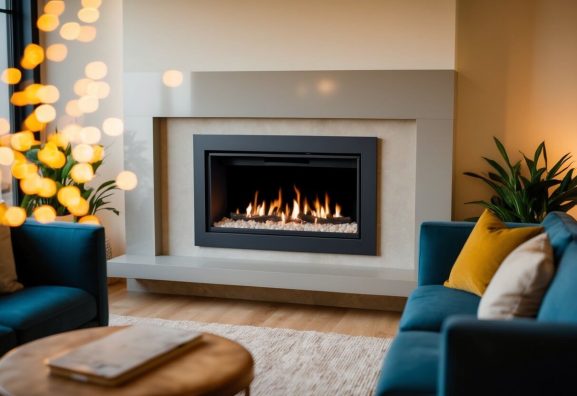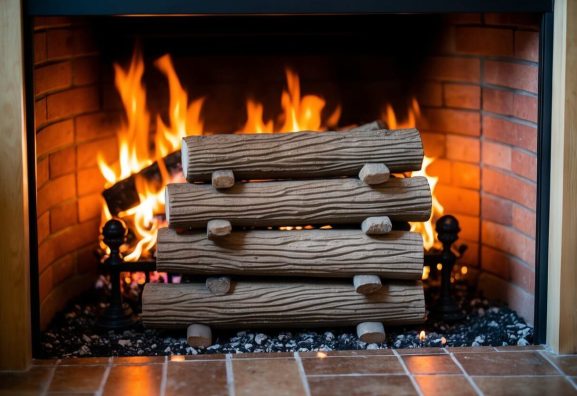What Is a Ventless Gas Fireplace? Pros & Overview
Ventless gas fireplaces are becoming increasingly popular for their convenience and design flexibility. These units burn gas with an efficiency that allows them to function without traditional venting, providing supplemental heat for various spaces in a home. In essence, they offer an innovative solution for those looking to enjoy a cozy ambiance without the need for extensive installation work.
While ventless gas fireplaces can be placed in numerous locations, it’s crucial to understand the associated safety and air quality considerations. They operate by combusting gas and releasing minimal exhaust directly into the room, making it essential for users to maintain an appropriate environment. This unique operation can lead to benefits, such as reduced installation costs, but also raises questions about air quality and compliance with local building codes.
Choosing the right fireplace involves weighing its advantages against potential drawbacks. Understanding the energy-efficient qualities of ventless gas fireplaces can enhance a home’s heating options while promoting an inviting atmosphere during colder seasons.
Key Takeaways
- Ventless gas fireplaces offer easy installation and flexibility in design.
- Safety considerations are essential due to the release of combustion gasses.
- These units can provide efficient supplemental heat for various spaces.
Understanding Ventless Gas Fireplaces

Ventless gas fireplaces are innovative heating solutions that do not require traditional venting systems. They utilize natural gas or liquid propane to produce heat efficiently while enhancing indoor ambiance without permanent installation structures.
How Ventless Fireplaces Work
Ventless fireplaces feature an internal combustion system designed to burn gas fuel. Unlike traditional models, they do not vent exhaust gases outside, enabling heat retention within the space.
The combustion process mixes gas with air, meaning nearly all fuel converts to usable heat, with minimal emissions released into the room. This design enables them to achieve high heating efficiencies, often up to 99%.
Some models include ODS (Oxygen Depletion Sensor) for added safety, which automatically shuts off the fireplace if oxygen levels drop too low, ensuring a safe environment for users.
Types of Ventless Gas Fireplaces
There are several types of ventless gas fireplaces, allowing for diverse installation options based on individual preferences and home designs.
- Wall-Mounted: These fireplaces are installed directly on walls, creating focal points in living spaces.
- Tabletop Units: Small, portable models that can be moved easily, ideal for both indoor and outdoor use.
- Built-In Fireplaces: Integrated within walls or spaces, offering a seamless aesthetic.
Most ventless models allow for customization with various flame media, such as glass beads or decorative stones, enhancing visual appeal alongside functionality.
Ventless vs. Vented Gas Fireplaces
Vented gas fireplaces are designed to channel exhaust gases outdoors, which helps maintain indoor air quality. This design, however, can lead to heat loss through venting.
In contrast, ventless models excel in energy efficiency by keeping all produced heat indoors. They require less installation space since there’s no need for chimney or flues, making them more versatile in location options.
Safety features are crucial in both types. While vented fireplaces generally pose fewer concerns for indoor air quality, ventless options should include proper monitoring to ensure safe operation, particularly in smaller spaces.
Installation and Building Codes

Understanding the installation process and relevant building codes is critical for those considering a ventless gas fireplace. Proper adherence to guidelines ensures safety, efficiency, and compliance with legal standards.
Installation Process
Installing a ventless gas fireplace involves several key steps. First, the area must be assessed for proper location, considering factors such as clearance from walls, ceiling height, and proximity to combustible materials.
Next, a professional may connect the gas line, ensuring it complies with local regulations. Most ventless models require minimal clearance compared to vented fireplaces, which simplifies installation. The fireplace should then be securely mounted and tested for leaks.
Homeowners should also consider any necessary modifications to cabinetry or mantels for proper fit. Engaging licensed professionals for installation is advisable to ensure compliance with safety standards and operational efficiency.
Understanding Local Building Codes
Local building codes dictate the installation requirements for ventless gas fireplaces. These regulations often specify clearance distances from combustibles, airflow requirements, and exhaust configurations.
Many jurisdictions have adopted codes that reflect specific safety standards, including the National Fire Protection Association (NFPA) regulations. Homeowners should review their local building codes carefully to avoid violations and ensure safety.
It’s also important to consult with local officials or a certified installer before proceeding with installation. This helps avoid costly adjustments later on and ensures the fireplace operates within legal and safety parameters. Adhering to these codes fosters safe and efficient use of gas fireplaces in residential settings.
Safety and Air Quality Considerations
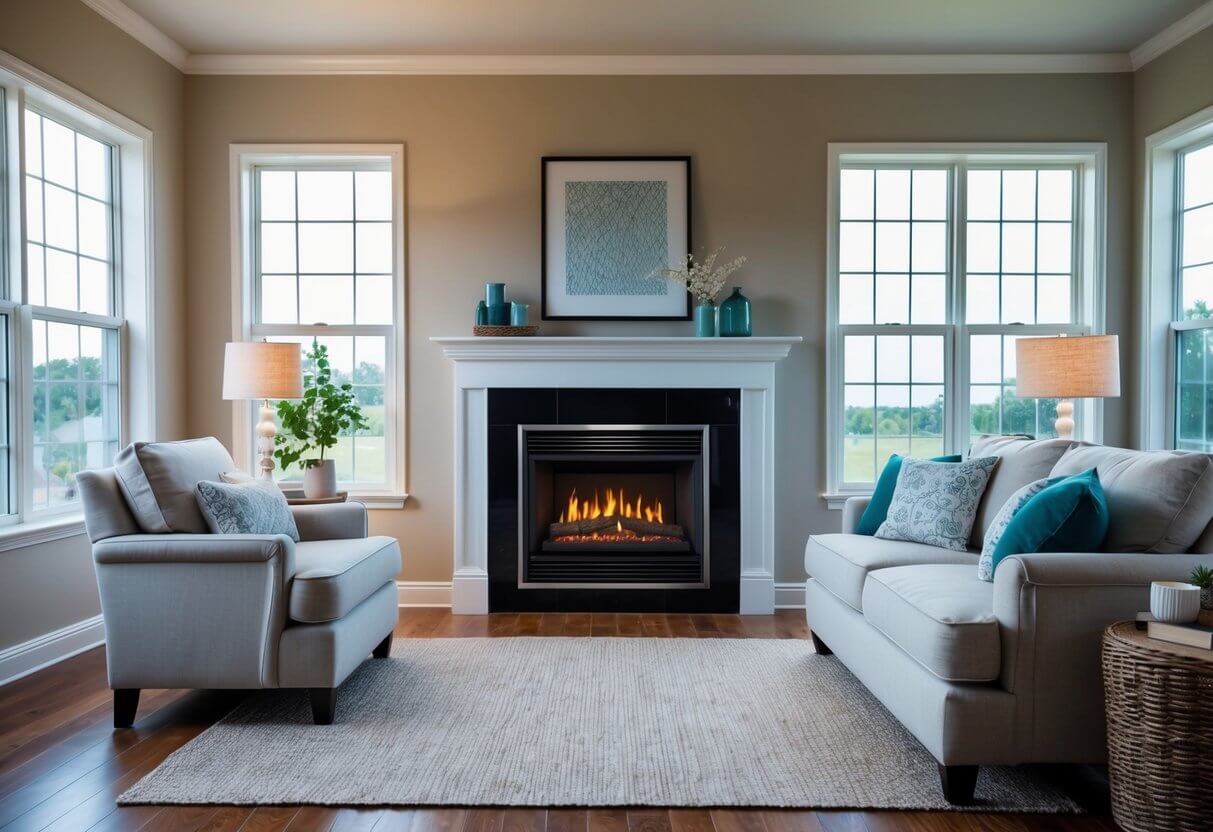
Ventless gas fireplaces can improve heating efficiency, but they also pose safety and air quality risks that should not be overlooked. Key factors include carbon monoxide levels, oxygen depletion, and moisture generation, which can substantially affect indoor environments.
Carbon Monoxide and Oxygen Levels
Ventless gas fireplaces produce combustion byproducts, including carbon monoxide (CO). CO is an odorless gas that can be harmful at high concentrations, leading to symptoms like headaches and dizziness.
Proper ventilation is essential. Users should install CO detectors near the fireplace to monitor levels. This practice helps ensure safety, particularly during extended use.
Additionally, ventless systems may consume indoor oxygen. In tightly sealed homes, this can lower oxygen levels, causing discomfort and respiratory issues. Maintaining adequate airflow is crucial to mitigate these risks and ensure safe operation.
Humidity and Air Quality Concerns
Ventless gas fireplaces can increase humidity levels in the home, as they release water vapor during combustion. Excess moisture can lead to mold growth and other indoor air quality concerns.
High humidity affects comfort and may aggravate allergies or respiratory conditions. It is advised to monitor humidity levels and use dehumidifiers when necessary.
Moreover, the generation of other combustion byproducts, such as nitrogen dioxide, can further compromise air quality. Regular maintenance and consultation with professionals can help address these issues effectively. Proper installation and adherence to safety guidelines are vital in minimizing air quality concerns related to ventless gas fireplaces.
Benefits and Limitations
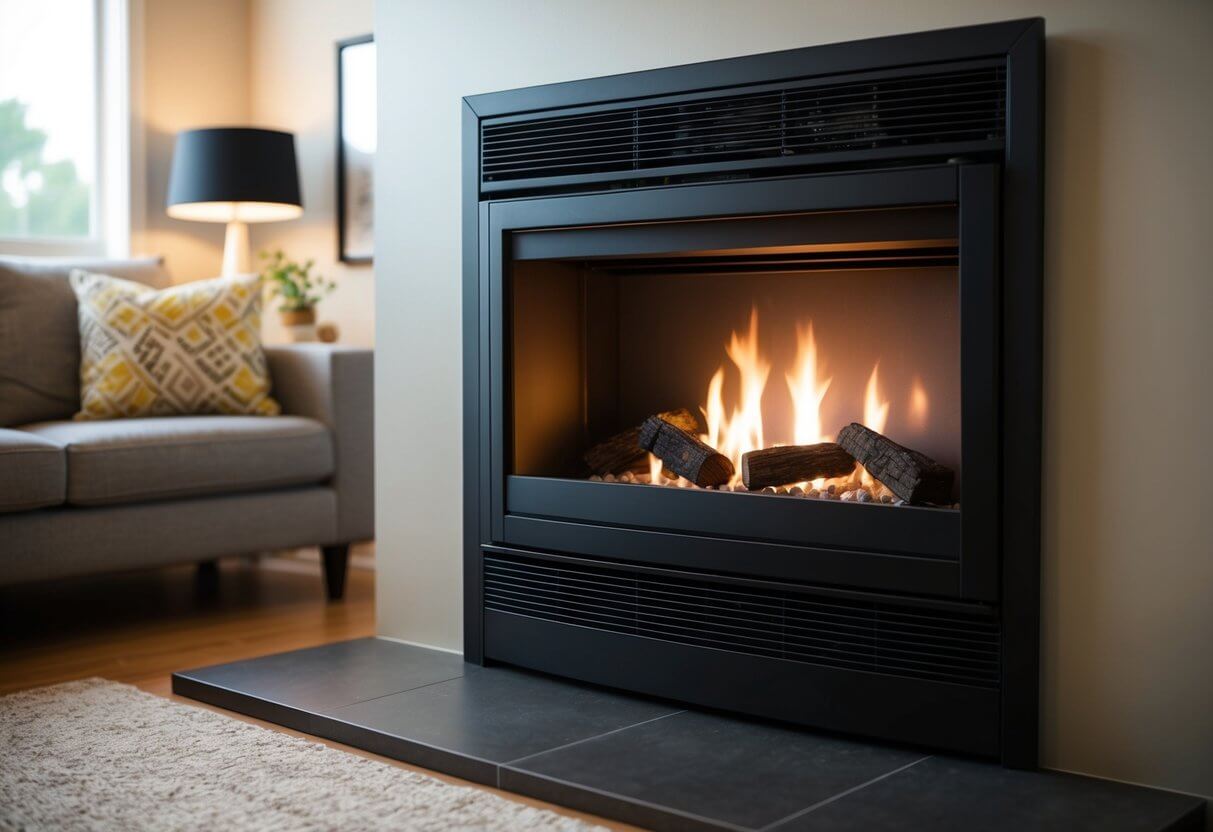
Ventless gas fireplaces offer unique advantages and drawbacks that must be weighed before installation. Their design allows for efficient heating, but there are important considerations regarding air quality and heat output.
Energy Efficiency and Heating Source
Ventless gas fireplaces are known for their high energy efficiency. They utilize a sealed combustion process, burning gas with minimal waste. This allows for nearly 100% energy conversion, resulting in effective supplemental heating for spaces.
These units can be used in various areas of a home, enhancing comfort without the need for traditional venting systems. They provide zoning for heating, directing warmth where it is most needed and effectively reducing energy costs.
However, while they are energy efficient, the combustion process does release moisture and carbon monoxide into the air. Proper ventilation and adherence to safety guidelines are essential for maintaining air quality.
Pros and Cons of Ventless Gas Fireplaces
The advantages of ventless gas fireplaces include easy installation and versatility. They can be installed almost anywhere, eliminating the need for expensive chimney construction. Freestanding models are especially popular, offering design flexibility.
Despite these benefits, there are several limitations. Concerns over air quality arise due to the gases emitted during operation. Some jurisdictions impose restrictions on their use, citing potential health risks.
The heat output may also be limited compared to traditional fireplaces, affecting their efficiency in larger spaces. Homeowners should evaluate these pros and cons to determine if a ventless gas fireplace aligns with their heating needs and safety preferences.
Maintenance and Operation
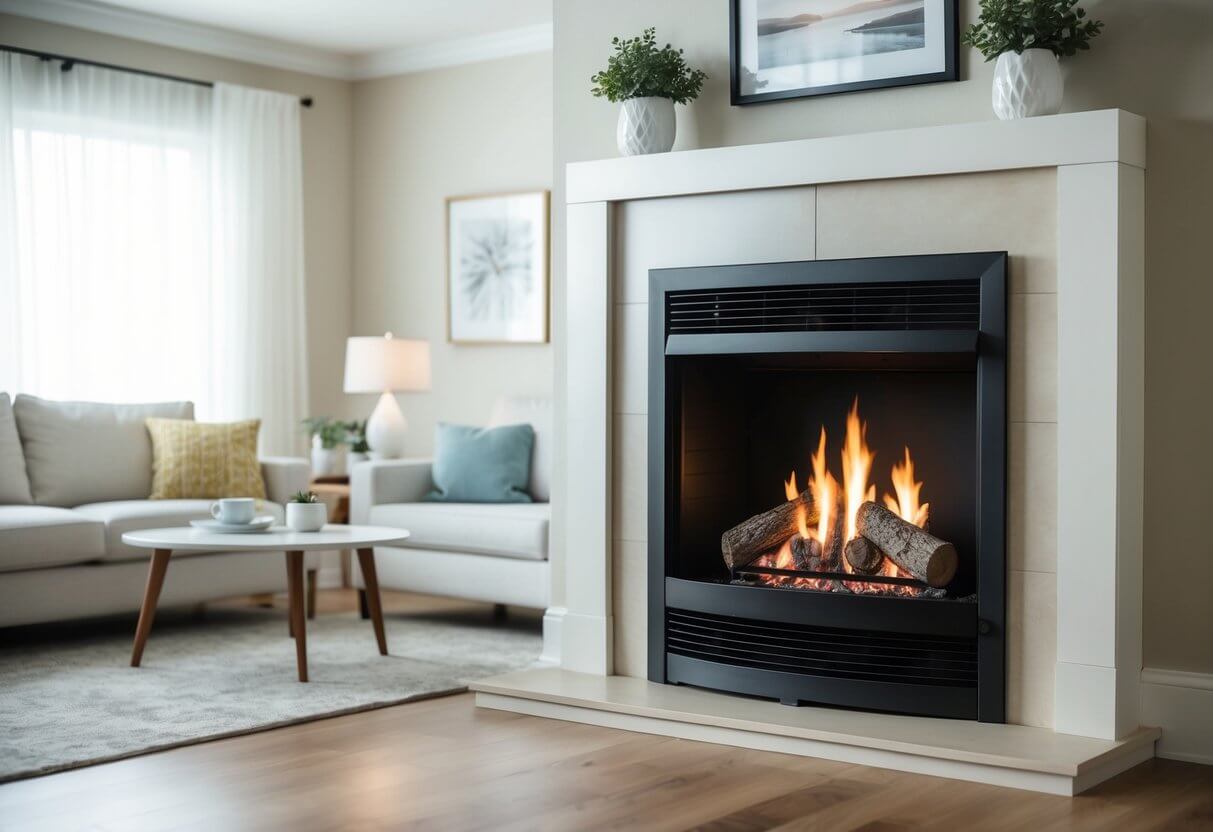
Ventless gas fireplaces require specific care and proper operation to ensure safety and efficiency. Regular maintenance tasks help prolong their lifespan, while understanding the operation will enhance user experience.
Routine Maintenance Tasks
Routine maintenance is crucial for ventless gas fireplaces. It includes cleaning the components and checking the functionality of gas control systems. Maintenance tasks should be performed every three months, or more frequently if pets are present.
Key tasks include:
- Turn Off the Gas Supply: Always ensure the gas is off before starting any maintenance.
- Clean the Burner: Inspect and clean the burner and air inlet holes with compressed air to remove dust and debris.
- Check the Logs: Clean the logs gently with a damp cloth to eliminate soot buildup.
- Inspect the Pilot Light: Look at the pilot light and ensure the ignition system, whether a millivolt system or an electronic ignition, operates correctly.
These steps are essential to maintain safety and performance.
Operating Your Ventless Gas Fireplace
Operating a ventless gas fireplace requires understanding various control options. Most models come with a remote control for convenient adjustment of settings.
The fireplace typically features:
- Standing Pilot Light: Maintains a constant flame, ensuring quick ignition.
- Intermittent Pilot: Activates on demand, improving efficiency by only igniting when needed.
Users should familiarize themselves with their specific model to utilize features effectively. Proper operation enhances warmth and comfort while ensuring the fireplace runs efficiently.
Routine checks and understanding these operating features will lead to a reliable and enjoyable heating experience.
Frequently Asked Questions

Ventless gas fireplaces raise several important questions regarding safety, operation, and installation. Understanding these aspects helps potential users make informed decisions about their heating options.
Are ventless gas fireplaces safe to use in a home?
Ventless gas fireplaces are generally considered safe when installed and maintained correctly. They are designed with safety mechanisms, including oxygen depletion sensors. However, proper ventilation and adherence to manufacturer guidelines are crucial to minimize any risks related to indoor air quality.
How does a ventless gas fireplace operate without ventilation?
A ventless gas fireplace uses room air for combustion, eliminating the need for a chimney or vent. This system allows the fireplace to burn gas efficiently, converting nearly all of it into heat. By drawing in indoor air, it maintains its functionality while preventing heat loss through traditional venting.
What are the potential downsides to installing a ventless gas fireplace?
The main drawbacks include concerns about indoor air quality and moisture buildup. While these units can be efficient, they produce combustion byproducts that may accumulate in enclosed spaces. Users must consider their homes’ ventilation and any health implications before installation.
Can a ventless gas fireplace be installed without an existing gas line?
Yes, a ventless gas fireplace can be installed without an existing gas line if the owner chooses alternative fuel sources, like propane. Installing a dedicated propane tank allows for flexibility in setting up a ventless model where natural gas may not be accessible.
What distinguishes a ventless gas fireplace from a vented model?
The key difference lies in their design and operation. Ventless gas fireplaces do not require chimneys or vents, allowing for more versatile placement options. Vented models, on the other hand, must be connected to a flue to safely expel combustion gases outside.
What factors should be considered when choosing the best ventless gas fireplace?
When selecting a ventless gas fireplace, key considerations include the intended space size, heat output, and style. Efficiency ratings and specific safety features also play essential roles. It’s crucial to choose a model that meets personal needs while adhering to local regulations.

